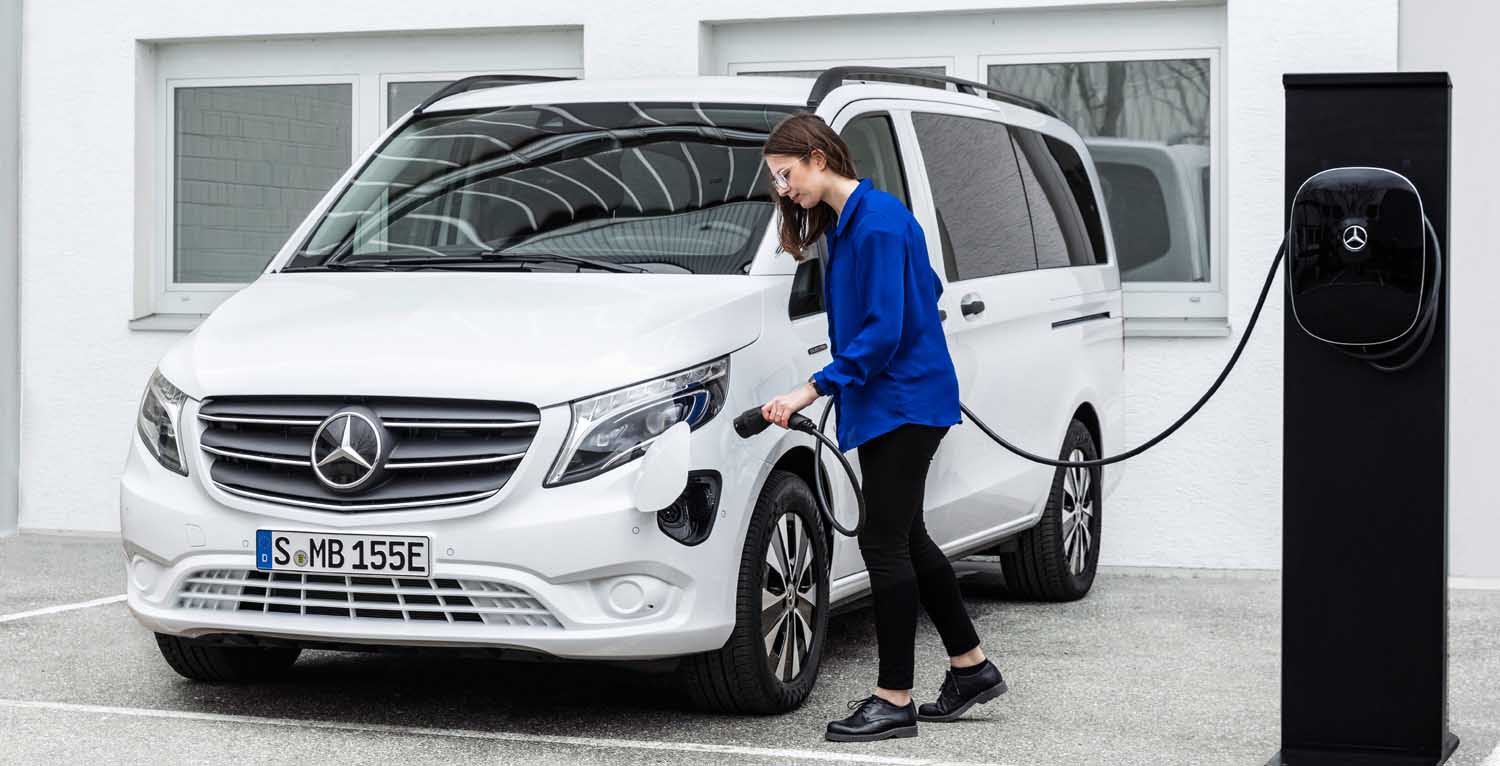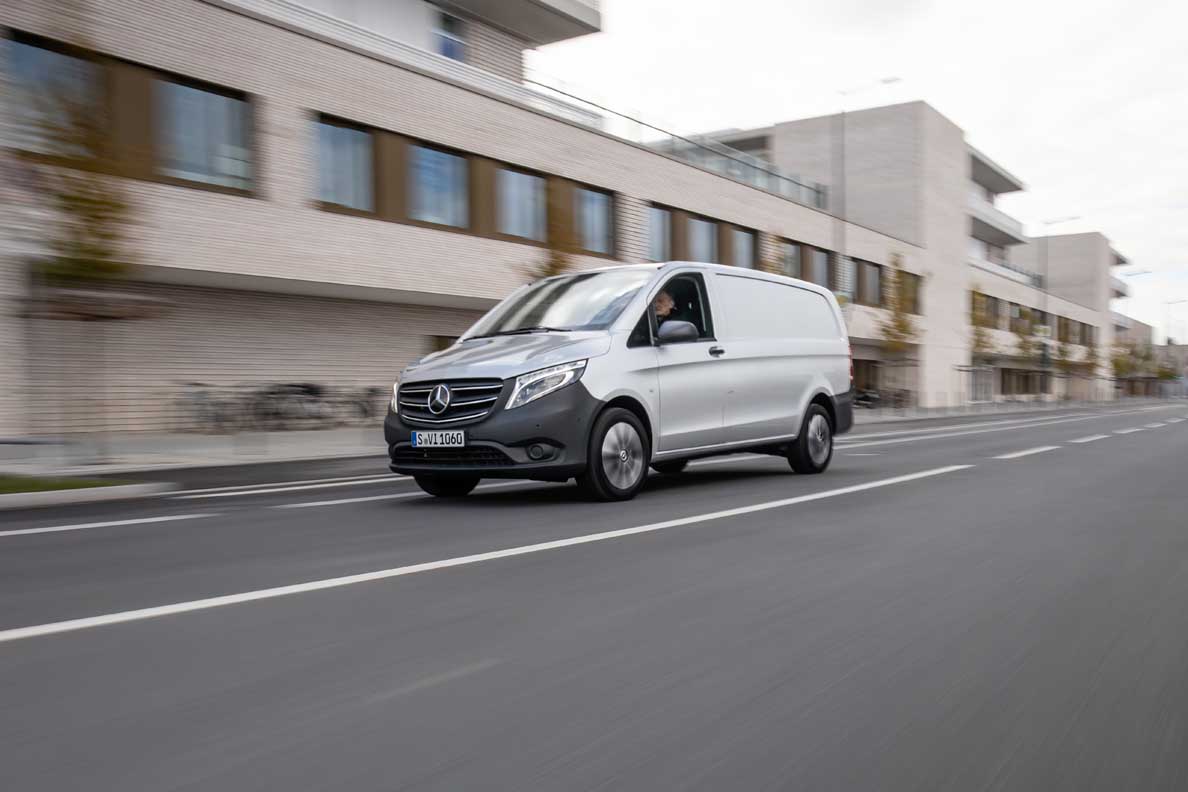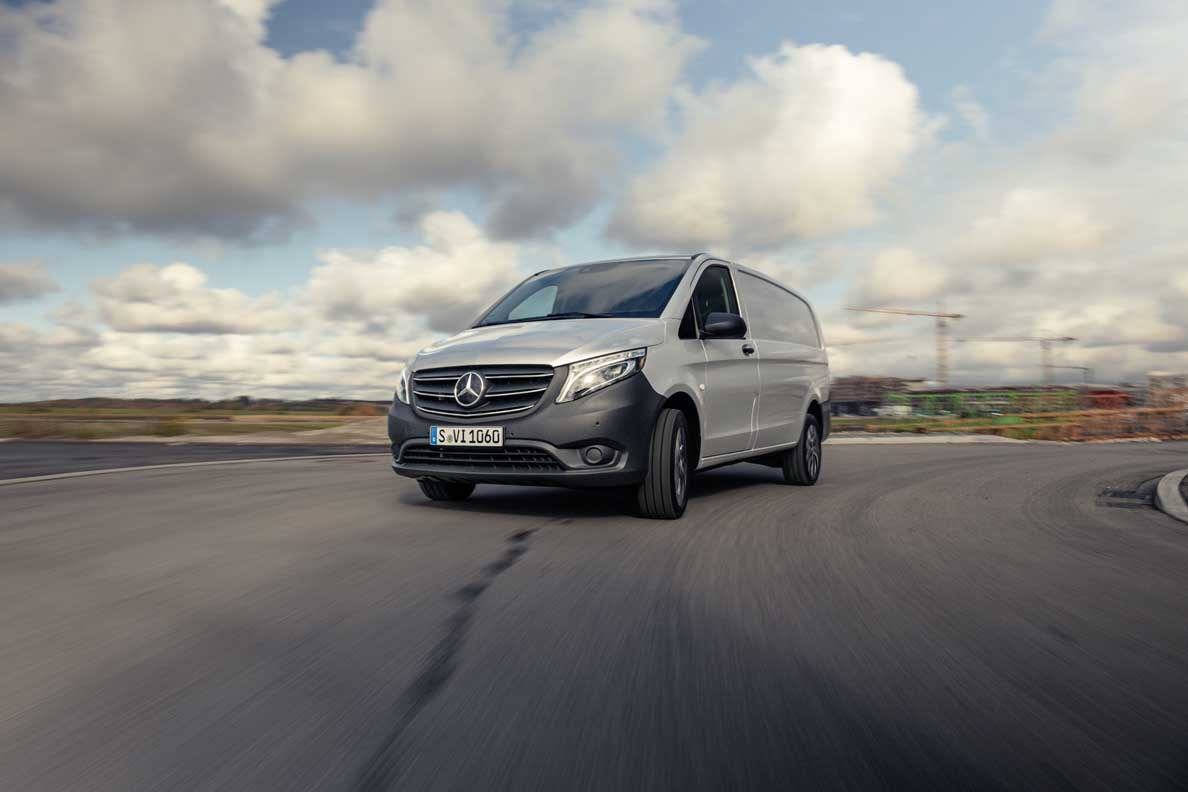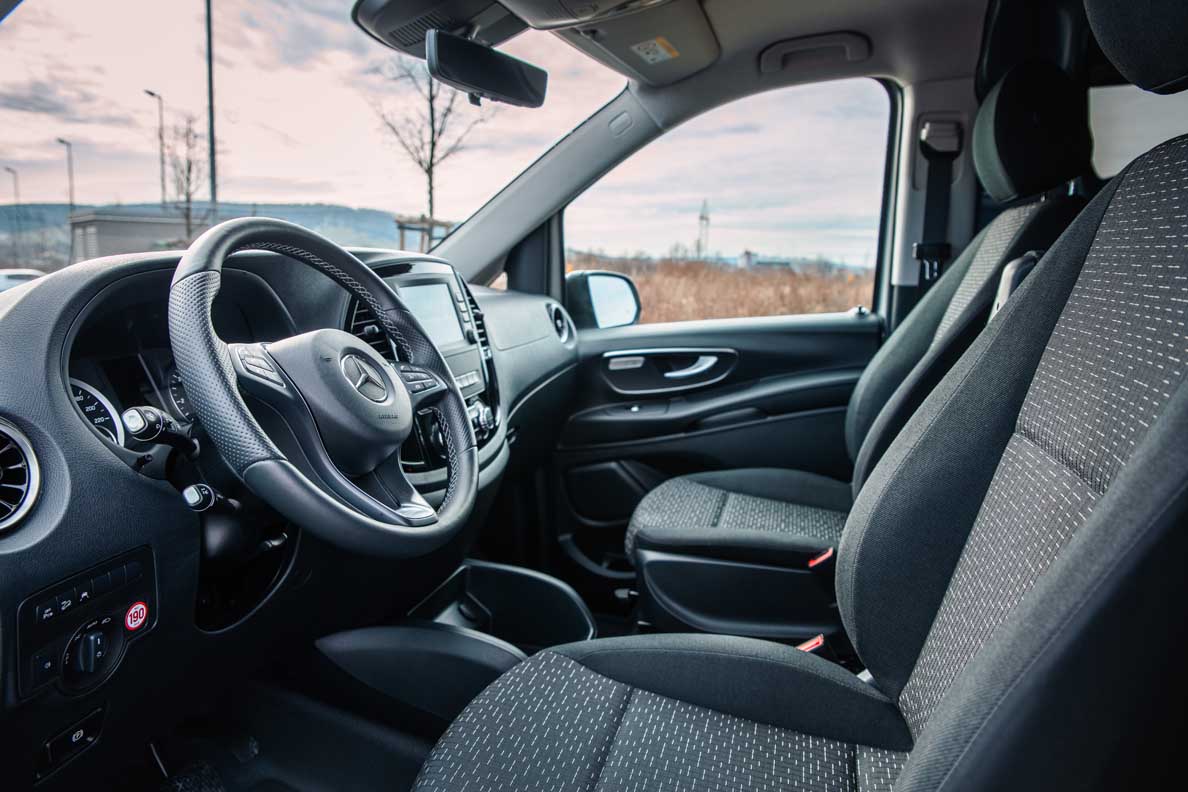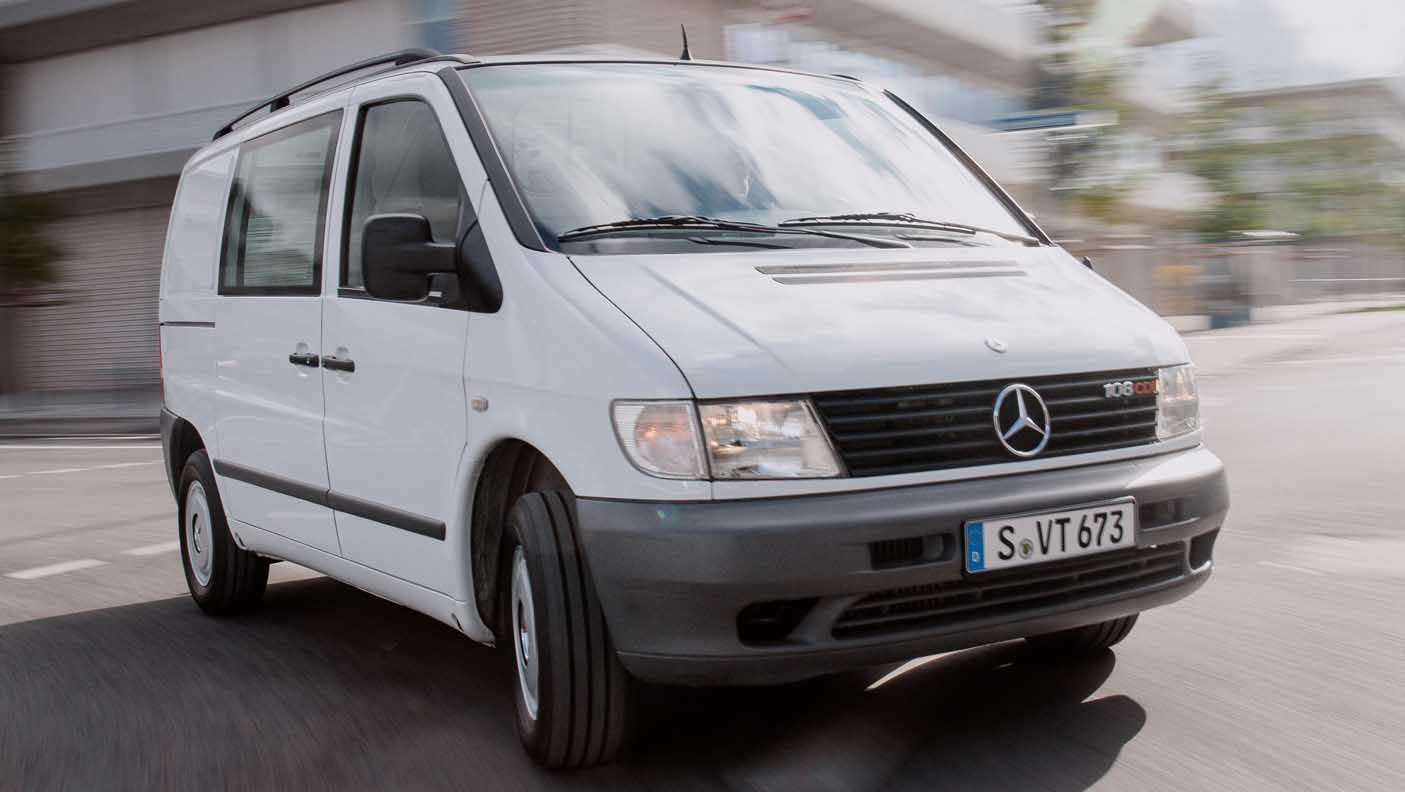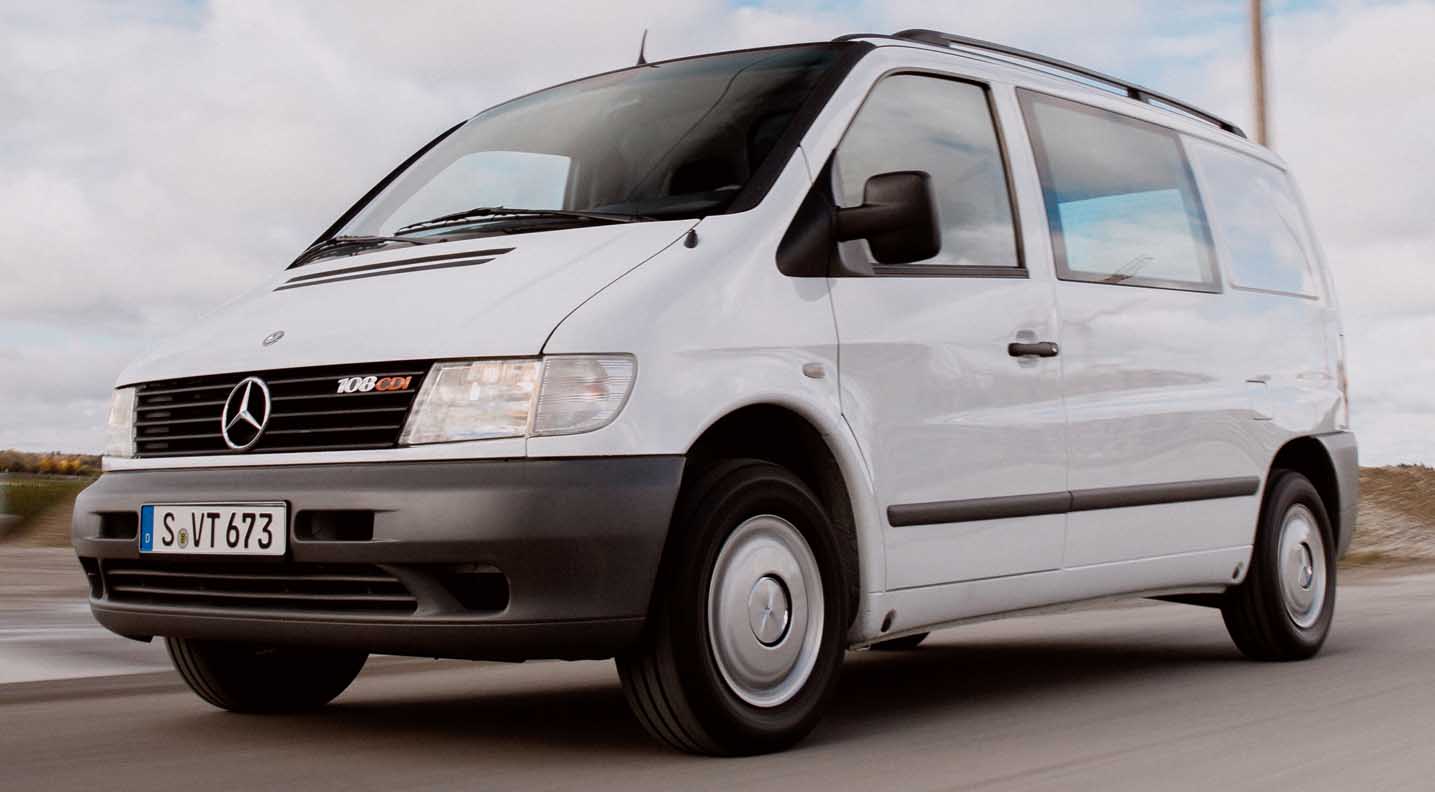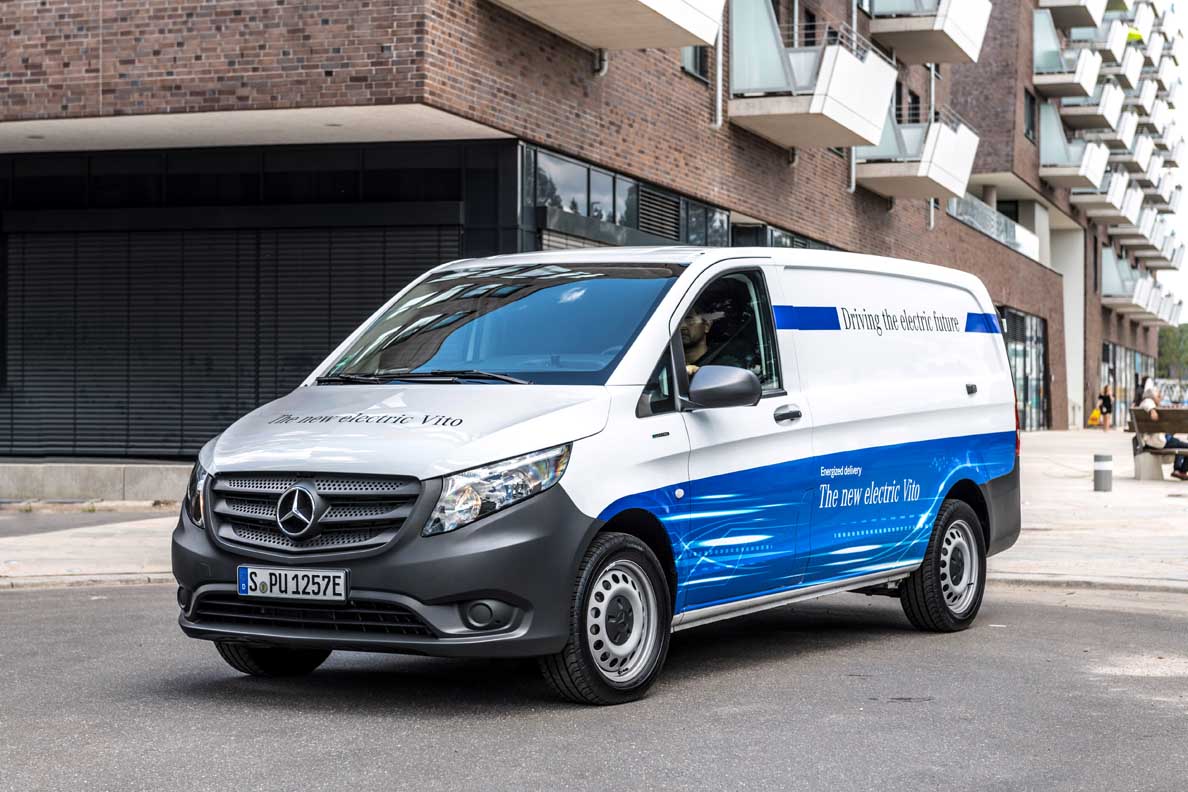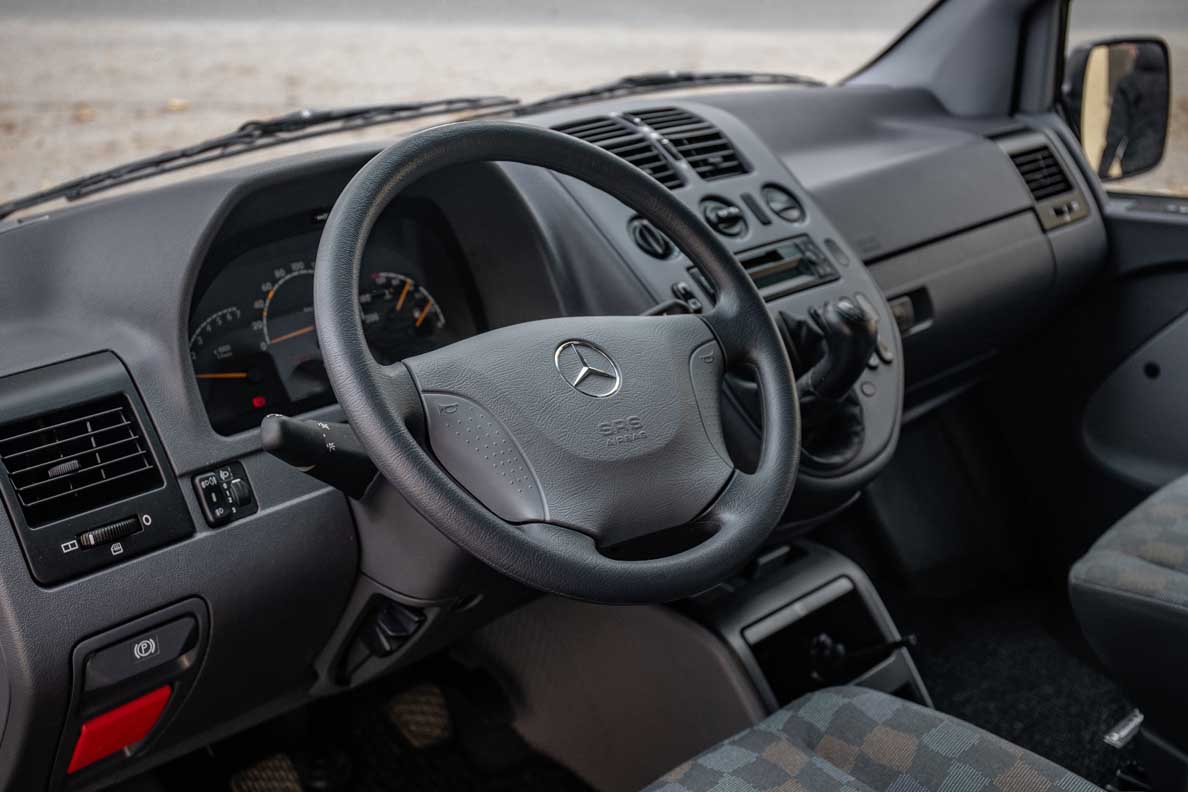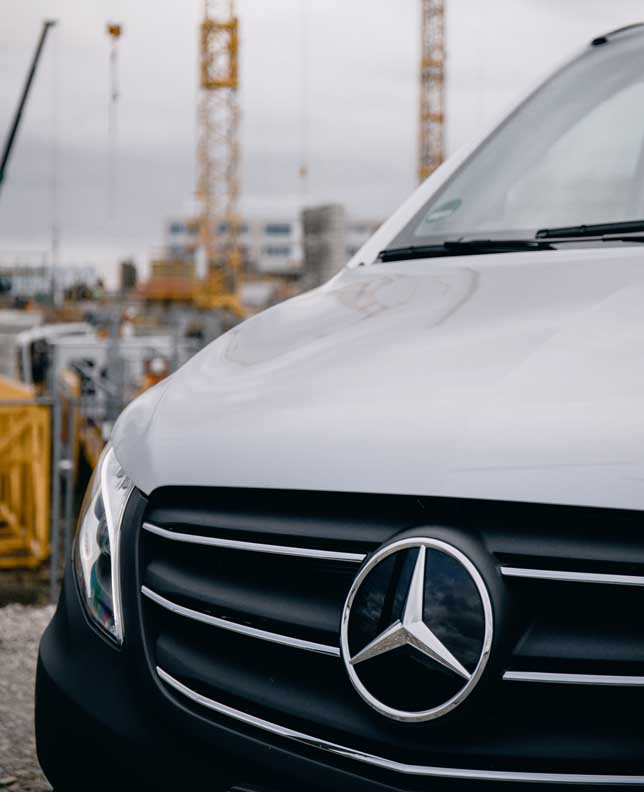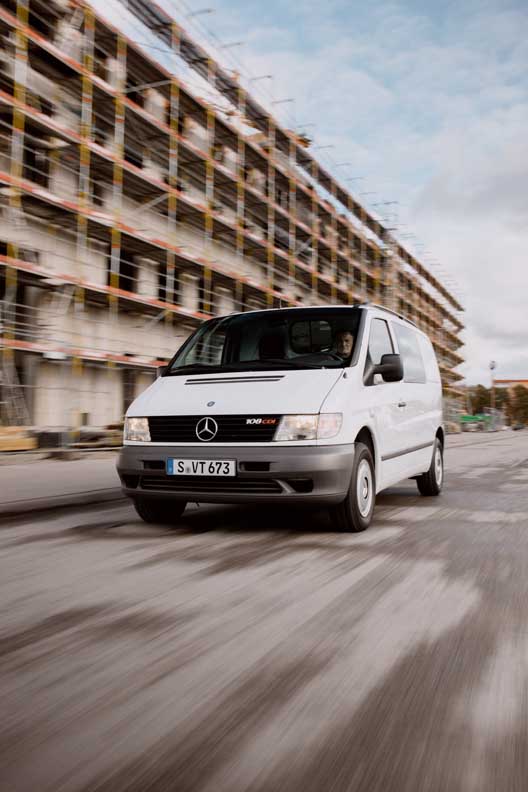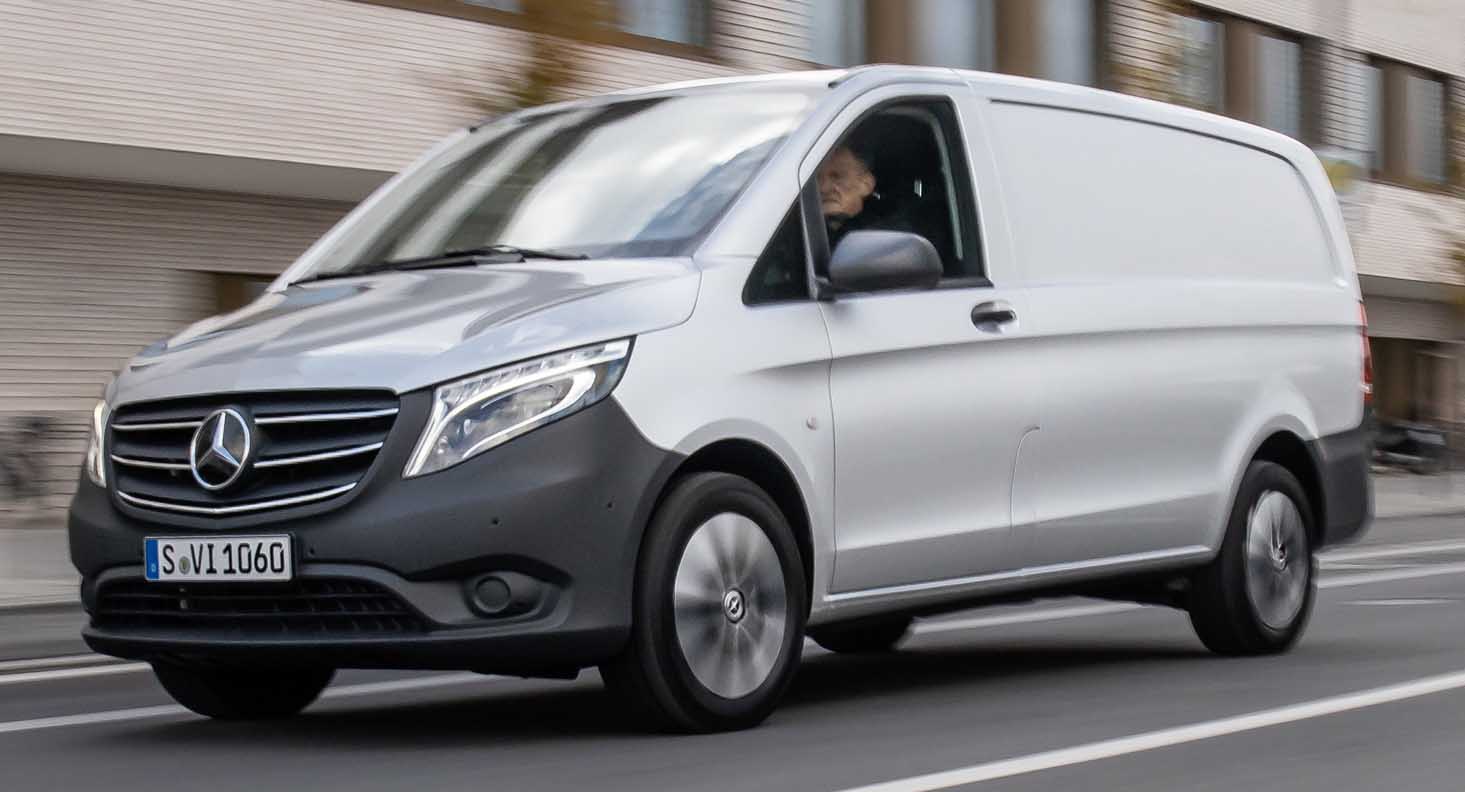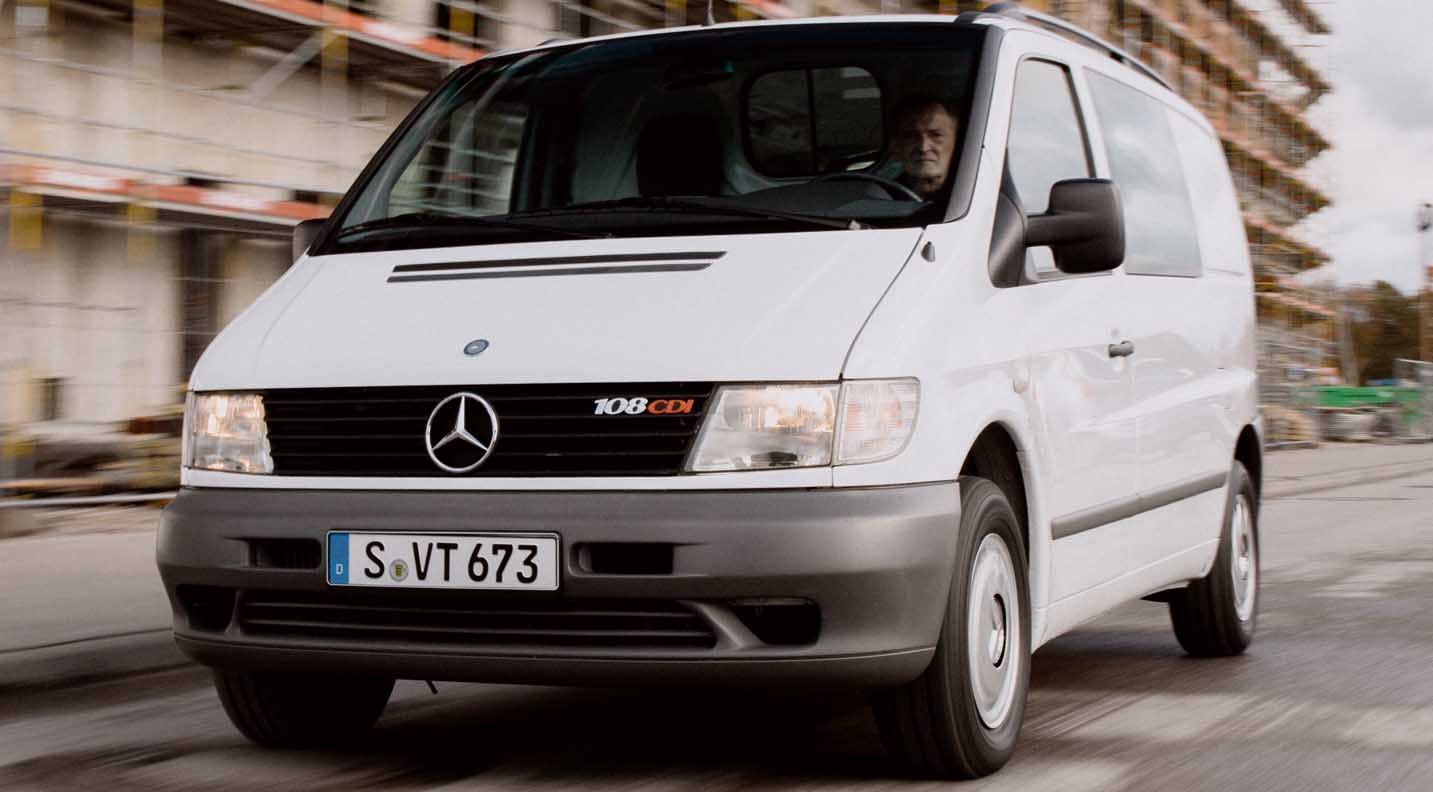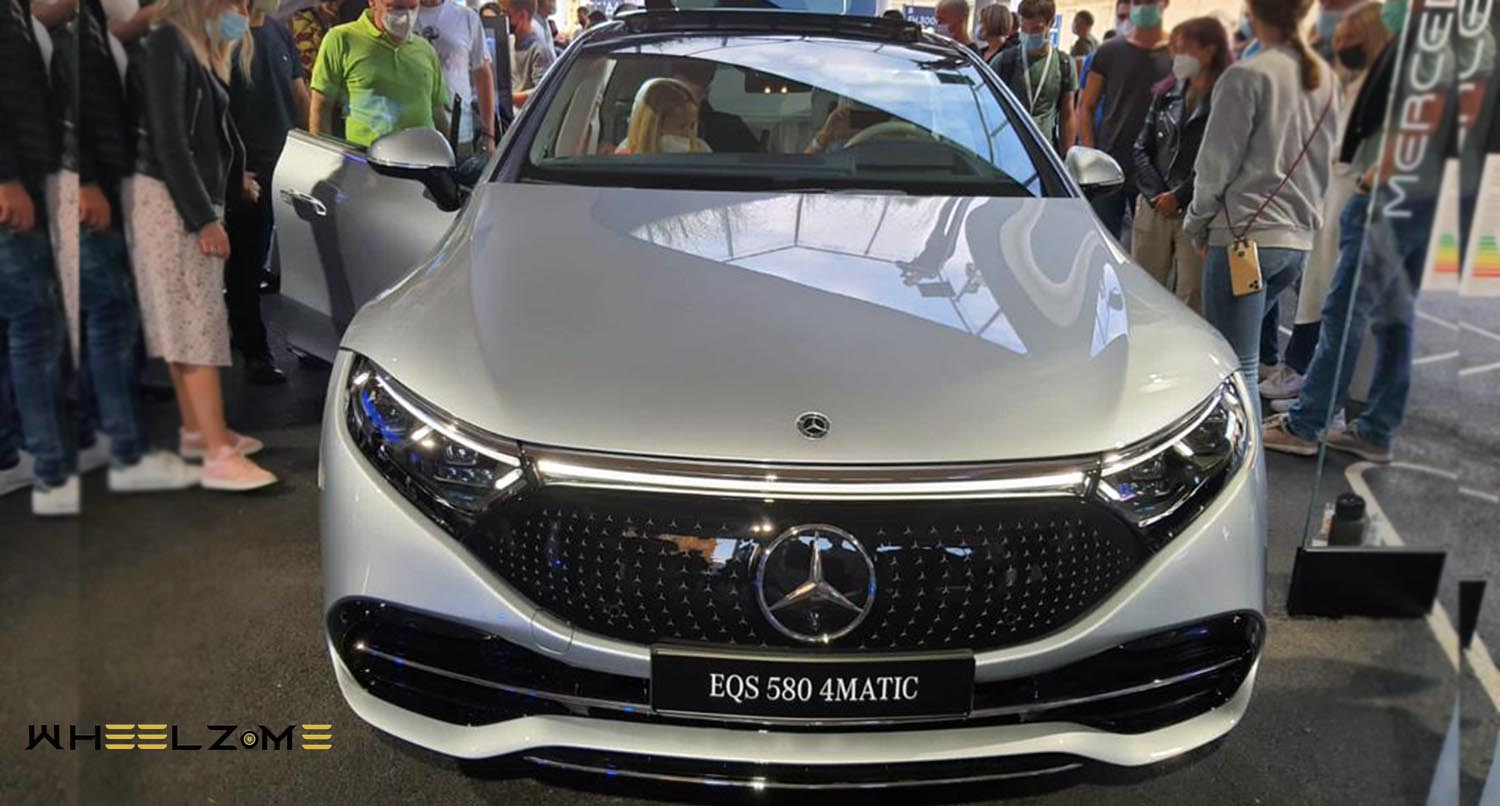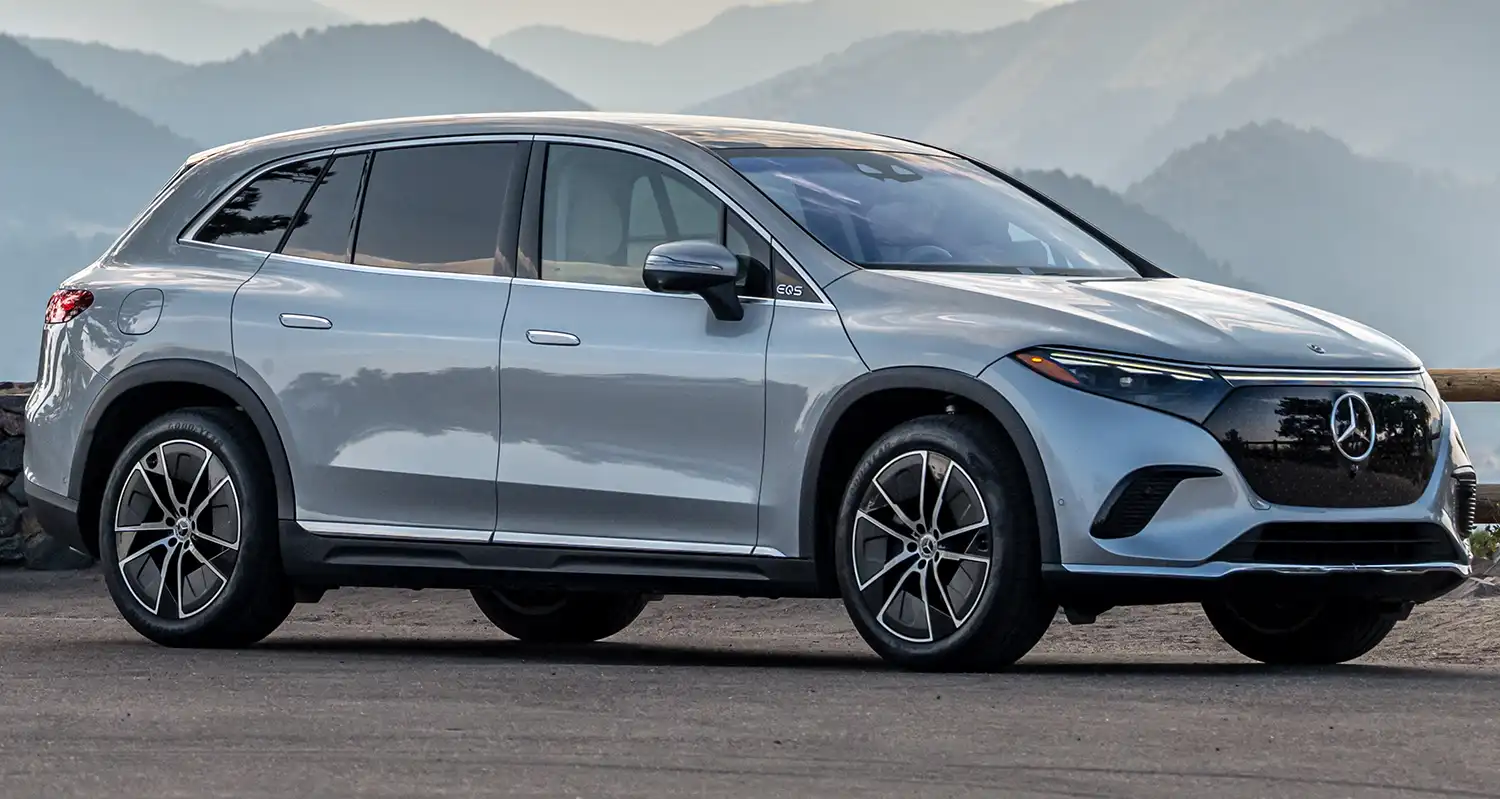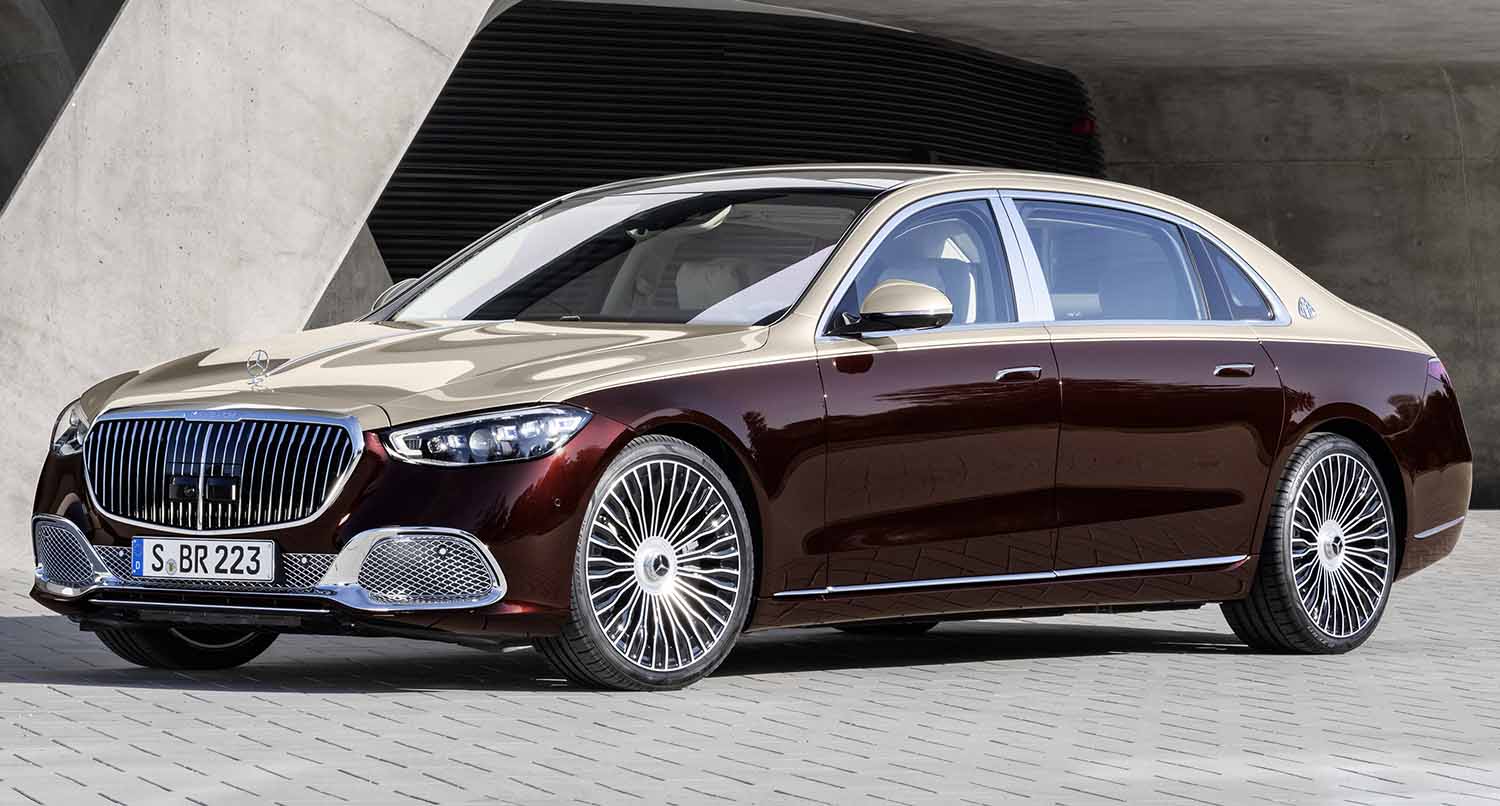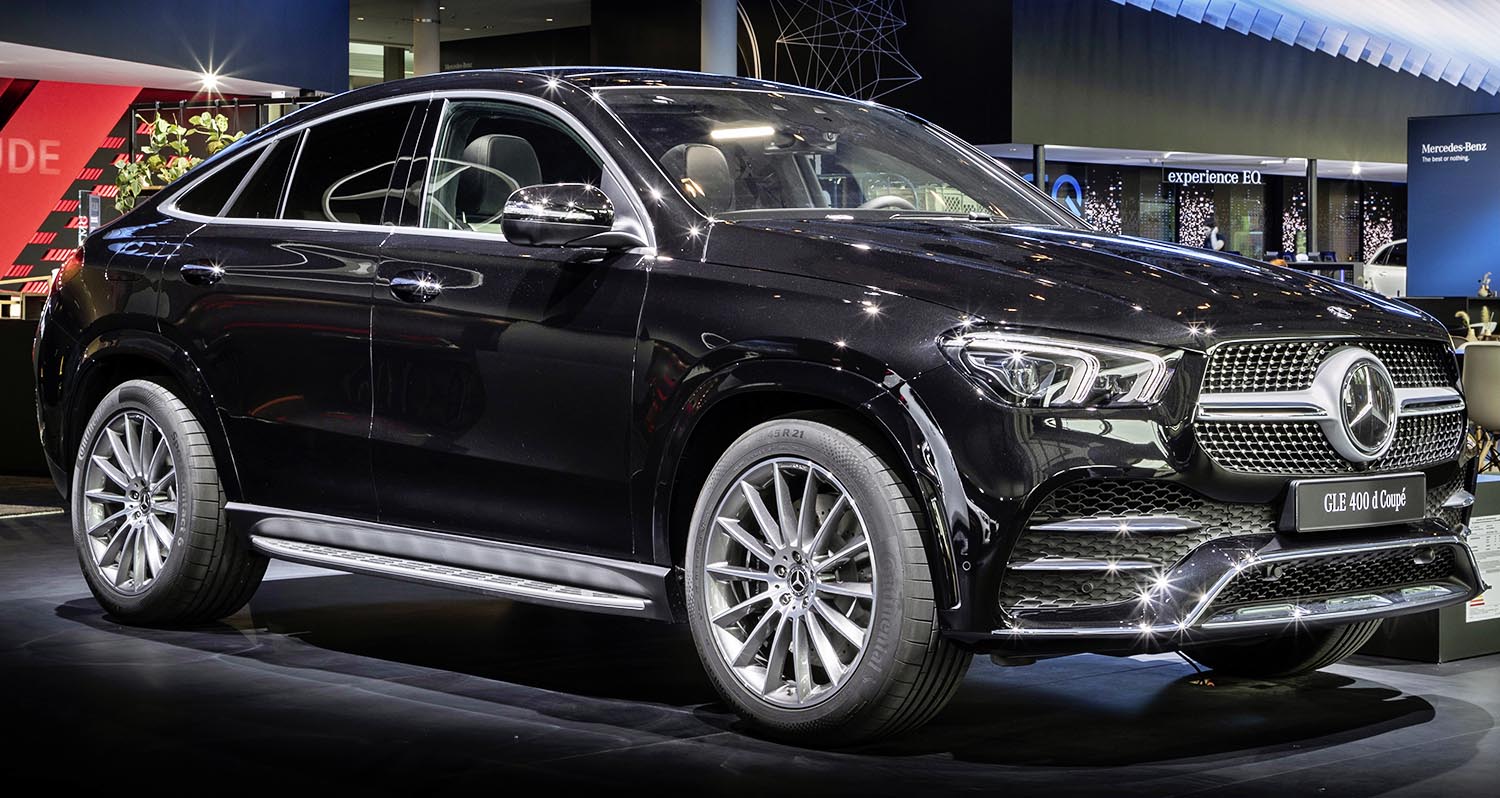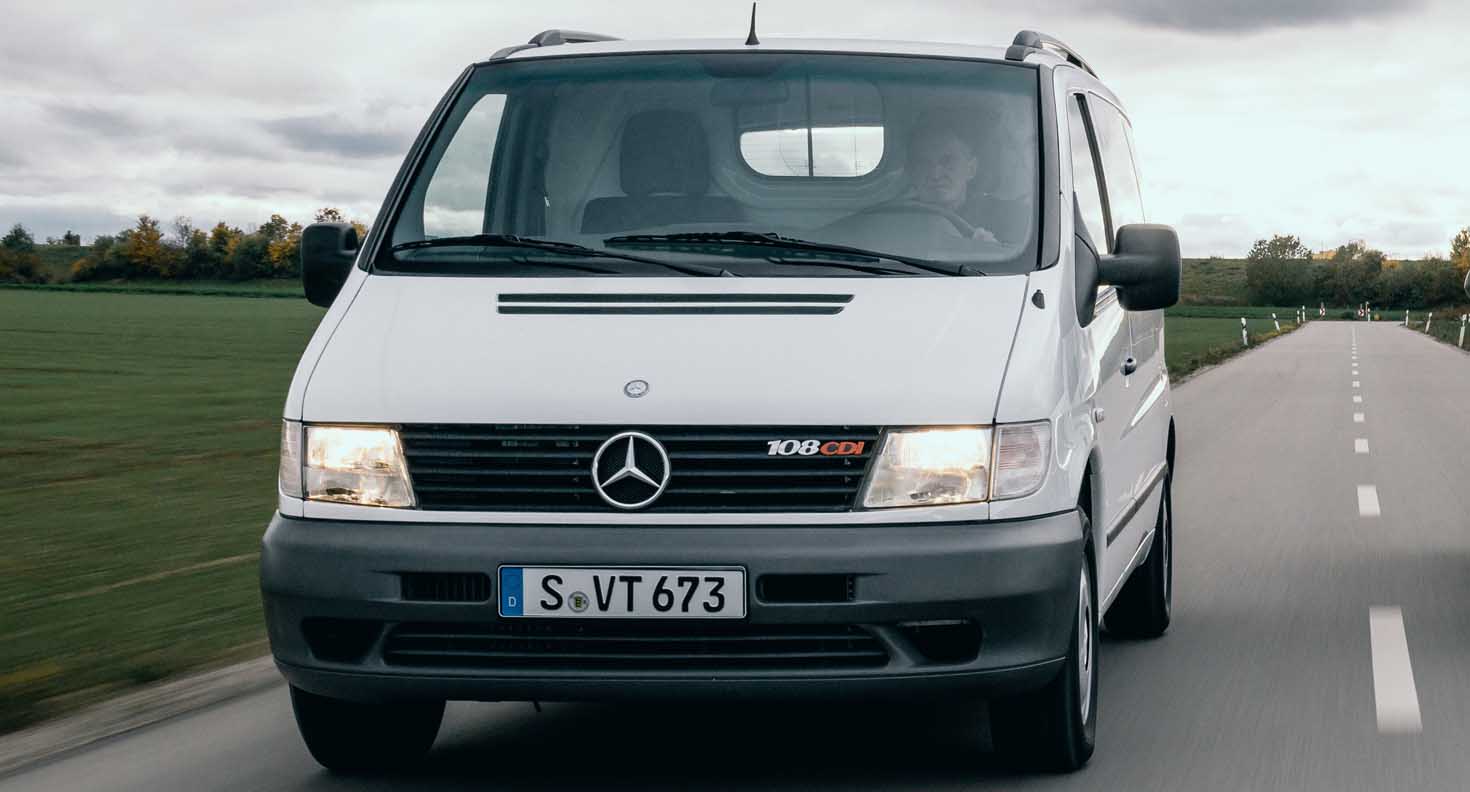
Reliable, robust and safe: it’s now a quarter of a century since the Mercedes-Benz Vito first established itself as a spacious and flexible van in many sectors. Just as it celebrates the 25th anniversary of its market launch, the versatile van is now free of charge available with Rear Cross Traffic Alert in combination with Blind Spot Assist.
In line with the 2020 facelift, Mercedes-Benz Vans introduced further safety and driver assistance systems for the Vito; namely DISTRONIC, Active Brake Assist and a digital inside rearview mirror. Since the market launch of the first generation in 1996 more than 1.8 million units of the successful van model series have been sold.
Befitting the 25th anniversary of the van’s market launch, the Mercedes-Benz Vito is now available with another safety assistance system. The Rear Cross Traffic Alert enables the detection of cross traffic up to a speed of 10 mph when reversing out of a parking space. A possible source of danger is warned optically by red triangles in the mirror and acoustically. This feature is available in conjunction with Blind Spot Assist.
Following a new look and technical update in 2020, the Vito is more attractive than ever thanks to new four-cylinder diesel engines and a well-balanced price-performance ratio.
The van is powered by a choice of five efficient four-cylinder diesel engines from the OM654 and OM622 family with an output of up to 174 kW (237 hp).
The top-of-the-range Vito 124 CDI with 174 kW (237 hp) and a torque of 500 Nm (combined fuel consumption 6.4-6.3 l/100 km, combined CO2 emissions 168-166 g/km)[1] is reserved exclusively for the Tourer and Mixto with passenger car registration.
Other innovations in the current generation of Vito vans include the upgraded infotainment portfolio, the 9G-Tronic automatic transmission, AIRMATIC air suspension for increased driving comfort and further safety systems. An update for design details both on the exterior and interior completes the facelift.
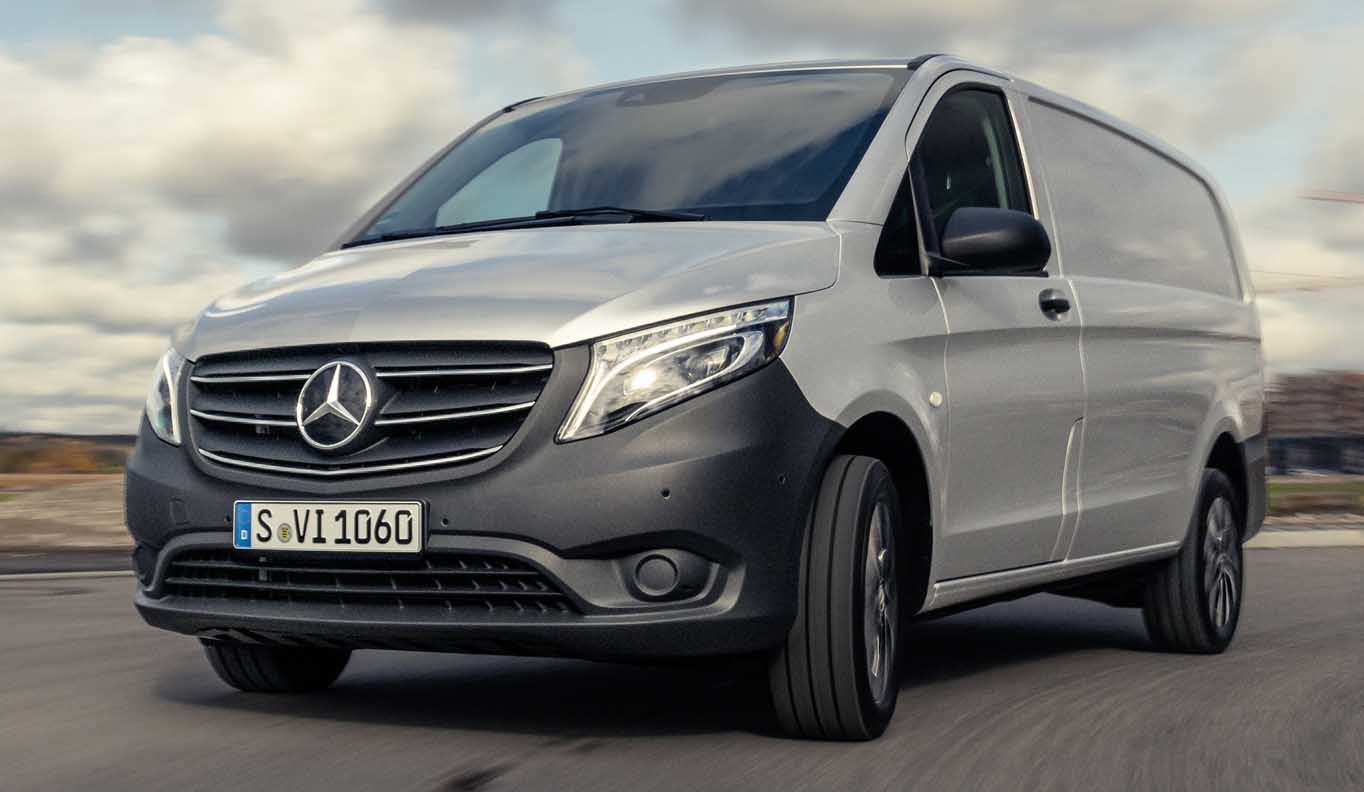
The first generation: with four-cylinder diesel and petrol engines mounted transversely
In 1996 Mercedes-Benz introduced the compact Vito, a van in the 2.6 to 2.8 tonne class which was of a completely new design and which heralded the start of a new age for light-weight commercial vehicles.
Its very name underscores this new era: instead of using a combination of letters and numbers the new arrival was given the name Vito – a direct reference to its “birthplace”, the van production plant steeped in tradition in the Basque capital, Vitoria-Gasteiz.
Introduced in Spain and Portugal at the end of 1995, this new development combined an attractive design with compact dimensions. With a vehicle height of 1.89 metres the midsize van fit in every garage. However the cargo area of 3.6 m2 provided a loading capacity of almost 5 m3 so that the Vito could also transport bulky cargo without problem.
And with a payload of one tonne, the front-wheel drive vehicle was also suited to carrying heavy goods. The transversely mounted four-cylinder diesel and petrol engines required minimum installation space while boasting low fuel consumption and an attractive driving performance. Industry experts and trade professionals applauded the new vehicle immediately and voted it “Van of the Year 1996”. Thanks to the facelift in 1999 demand for the Vito continued to remain high. By 2003 Mercedes-Benz had sold almost 473,000 first-generation vehicles.
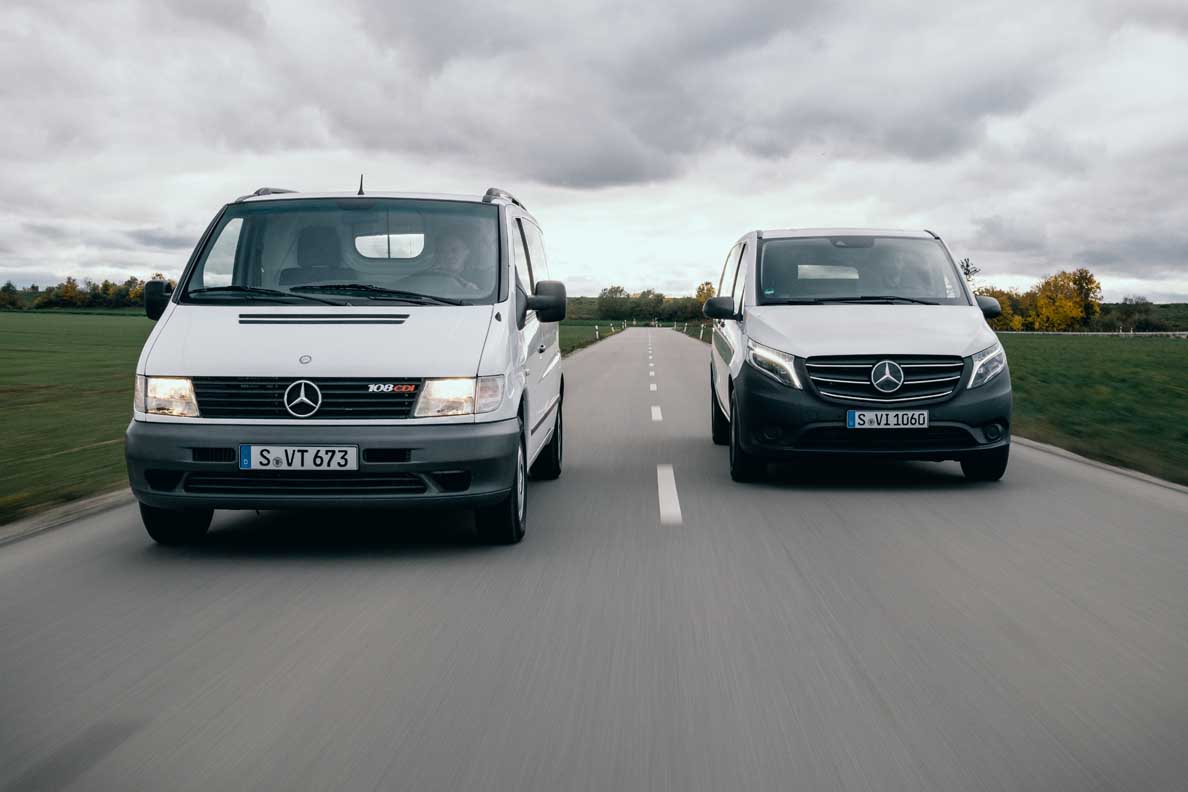
The second generation: with rear-wheel drive, greater comfort and greater variety
A new generation was launched in July 2003. Completely re-designed, all of the Vito variants now relied on rear-wheel drive rather than front-wheel drive. Furthermore an all-wheel drive variant added to the model diversity, opening the way for the robust van to operate off the beaten track.
There was also a range of more powerful engines to choose from: while the top-of-the-range diesel engine boasted an output of 165 kW/224 hp at 3800 rpm, the top performing V6 petrol engine now provided 190 kW (258 hp) at 5900 rpm.
Depending on the model variant, the vehicle length was extended by up to 58 centimetres to a maximum 5.24 metres while the wheelbase increased by up to 43 centimetres to a maximum 3.43 metres.
For the first time ever the new Vito was available in three different body lengths, two roof heights and with five different engines and was better equipped than ever to fulfil the diverse range of demands from a multitude of sectors. This huge leap in evolution paid off: in 2005 the European jury voted the Vito “Van of the Year”“.
The second generation of Vito vans also set a standard with regard to electrification: at a very early stage Mercedes-Benz intensified the development of alternative drives and in 2010 already began producing a small series of 100 Vito E-CELL vehicles. The battery-driven van was equipped with a 70-kW (95-hp) electric motor and a lithium-ion battery with a capacity of 32 kWh. Following the testing phase, the first purely electric vans left the factory for delivery in April 2011.
The second-generation Vito surpassed its outstanding predecessor and in its most successful sales year was sold almost 80,000 times. In total Mercedes-Benz sold almost 750,000 of the second-generation mid-size van.
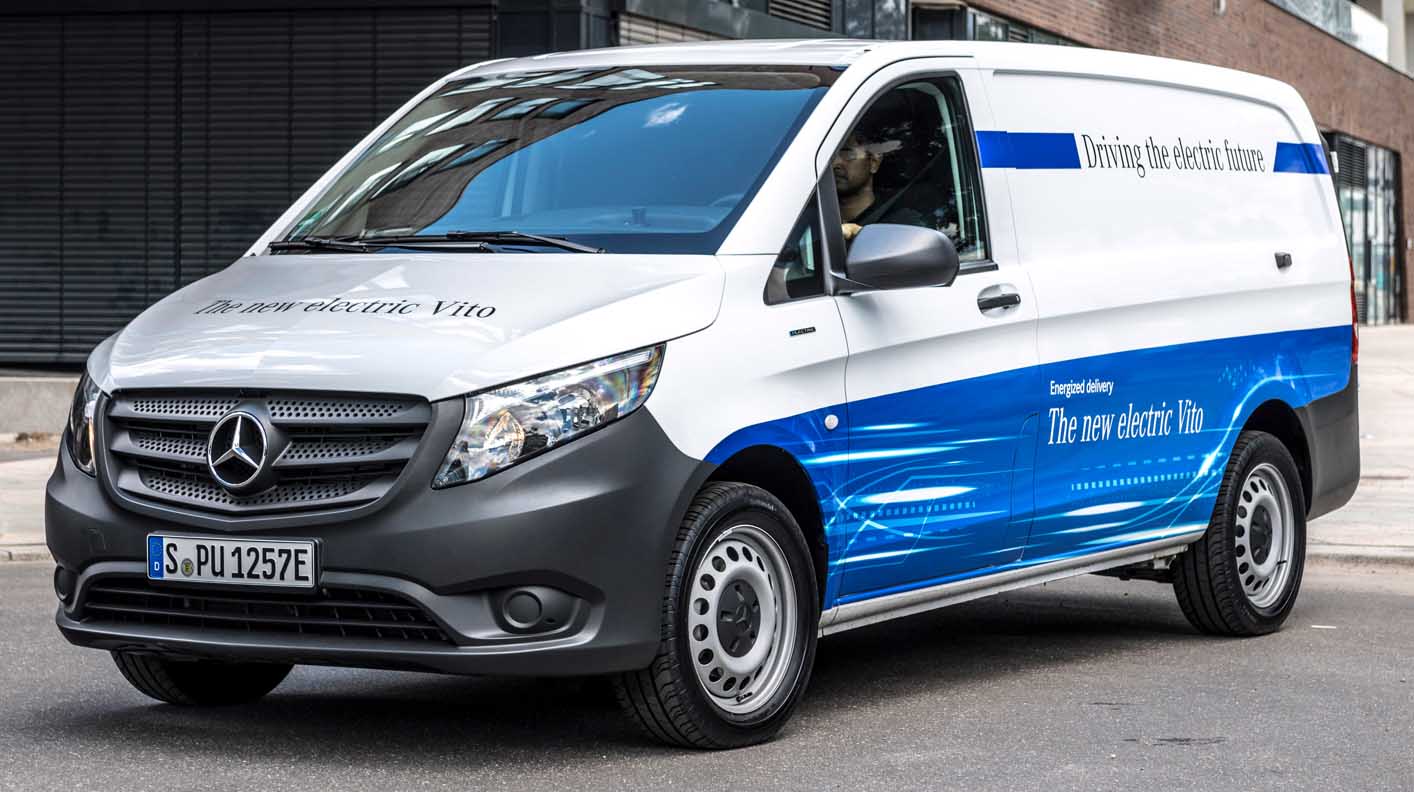
The third generation: even more versatile and attractive
In May 2014 the third generation of the Vito celebrated its premiere. Thanks to a new design, this new addition was extended by up to 13 centimetres in length to a maximum 5.37 metres although the wheelbase remained unchanged and thus offered more space for both cargo and passengers.
Furthermore customers now had a greater choice with regard to the drive system: in addition to the rear-wheel and all-wheel drive, front-wheel drive was once again available in conjunction with the entry diesel engine in two output stages. Not only has the range of conventionally driven midsize vans grown; the offering for electric vehicles has too: the purely electric eVito has been on the market since 2018. Since 2014 more than 600,000 of the current Vito variants have been sold.
The eVito Tourer: locally emission-free pioneer in the urban passenger transportation segment
In 2018 Mercedes-Benz launched the eVito, paving the way for sustainable, locally emission-free transportation of goods in urban areas. In the latest evolutionary step, presented in the spring of 2020, the eVito demonstrates (combined electrical consumption: 26.2 kWh/100 km; combined CO2 emissions: 0 g/km)[2] that it is best equipped to meet requirements regarding drive performance and range and is more than capable of operating as a hotel shuttle, spacious taxi or vehicle for ride-sharing services, for example.
The battery is located below the floor providing for unrestricted use of the load and passenger compartment. Thanks to flexible loading options and the possibility of rapid charging with direct current, the eVito Tourer is now even more versatile and can achieve a range of 421 kilometres2, [3].
[1] The stated figures have been determined on the basis of the mandatory measuring method. They are NEFZ-CO2-figures in terms of art.2 no.1 Directive (EU) 2017/1153. The fuel consumption figures have been determined on the base of these figures.
[2] Power consumption and range were determined on the basis of Directive 692/2008/EC. Power consumption and range depend on the vehicle configuration.
[3] The actual range is also dependent on the individual driving style, road and traffic conditions, the outside temperature, use of the air conditioning system/heating and may differ accordingly.
